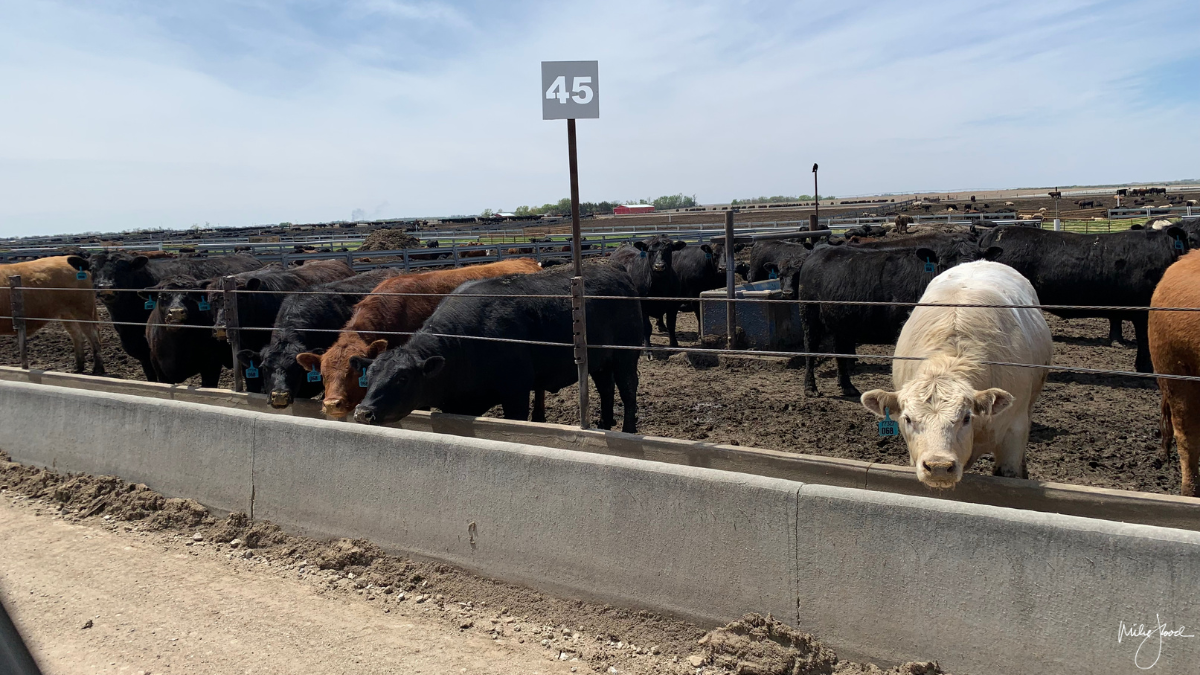The Economic Impact Of Flooding On Livestock Production

Table of Contents
Direct Economic Losses from Flooding
Flooding inflicts significant direct economic losses on livestock farmers, impacting their livelihoods and long-term sustainability. These losses manifest in several devastating ways:
Livestock Mortality
Floods cause high mortality rates among livestock. Drowning is an obvious threat, but hypothermia, exposure to contaminated water leading to disease outbreaks (e.g., leptospirosis), and injuries sustained during the flood itself all contribute to significant losses. Different livestock species exhibit varying vulnerabilities. For example:
- Cattle: Large cattle are often strong swimmers, but can be swept away by strong currents or become trapped in debris. Calves and younger animals are particularly vulnerable. Losses can easily reach thousands of dollars per animal, considering the cost of breeding stock replacement.
- Sheep and Goats: These animals are less adept swimmers and are prone to hypothermia in cold floodwaters. Large-scale losses of entire flocks or herds are possible.
- Poultry: Flooding can quickly drown poultry, destroy nesting sites and incubators, and contaminate feed, leading to widespread mortality.
Damage to Infrastructure
The destructive power of floodwaters extends beyond the animals themselves. Essential farm infrastructure suffers severe damage, incurring substantial repair or replacement costs. This includes:
- Cost of repairing damaged barns: Repairing flood-damaged barns can cost tens of thousands of dollars, depending on the severity of the damage. Complete rebuilding may be necessary in extreme cases.
- Replacing lost feed: Floodwaters can contaminate or destroy stored feed, resulting in significant feed shortages and necessitating expensive replacements.
- Rebuilding fences: Floods often damage or destroy fencing, requiring expensive repairs or replacements to contain livestock and prevent further losses. The cost of fence repair can add up quickly across large farming operations.
- Insurance claim challenges: Obtaining adequate compensation through insurance can be challenging due to complex claim processes and policy limitations.
Loss of Forage and Feed
Floodwaters contaminate pastures, rendering them unusable for grazing, and destroy crops used for animal feed. This leads to feed shortages, driving up feed prices, and impacting animal health and productivity. Specifically:
- Types of feed affected: Hay, silage, and other stored feeds are highly vulnerable to contamination and spoilage after flooding. Pasture land takes months to recover.
- Cost increases due to shortages: The sudden increase in demand due to shortages results in inflated prices for feed, impacting profitability.
- Impact on animal health: Poor nutrition due to feed shortages weakens animals, making them more susceptible to disease and reducing their productivity.
Indirect Economic Impacts of Flooding
Beyond the direct, immediate losses, flooding generates a range of indirect economic consequences that further impact livestock farmers:
Reduced Productivity
Surviving animals often experience reduced productivity in the aftermath of a flood. Stress, exposure to contaminated water, and inadequate nutrition can lead to:
- Reduced milk production: Dairy cows may experience a significant drop in milk yield following a flood.
- Slower weight gain: Beef cattle and other livestock may experience decreased weight gain, impacting market value.
- Lower fertility rates: Reproductive performance can be significantly affected, reducing breeding efficiency and future income.
Disrupted Market Access
Flooding can damage roads and transportation infrastructure, hindering access to markets. This can lead to:
- Market disruption: Farmers may be unable to transport their livestock to markets for sale, leading to significant losses.
- Loss of revenue: Livestock may need to be sold at distressed prices due to limited market access or spoilage.
- Challenges in transporting livestock: Damaged roads and bridges create logistical challenges and increased transportation costs, impacting profitability.
Increased Veterinary Costs
The increased incidence of disease and injury among flood-affected animals results in higher veterinary costs:
- Treatment costs: Treating diseases like leptospirosis and injuries sustained during floods significantly increases healthcare expenses.
- Long-term health problems: Animals may suffer from long-term health problems that further affect their productivity and increase the overall financial burden on farmers.
Mitigation and Adaptation Strategies
Mitigating the economic impact of flooding on livestock production requires a multi-pronged approach focusing on preparedness, resilient infrastructure, and financial support:
Flood Preparedness Plans
Developing comprehensive flood preparedness plans is crucial for minimizing losses:
- Early warning systems: Access to reliable early warning systems allows farmers to take timely preventative measures, such as moving livestock to higher ground.
- Evacuation strategies: Having well-defined evacuation plans and designated safe areas ensures the safety of animals.
- Emergency feed storage: Storing sufficient emergency feed in a safe, elevated location ensures that animals have access to food during and after a flood.
Investing in Flood-Resilient Infrastructure
Investing in flood-resistant infrastructure is a long-term strategy for reducing flood damage:
- Flood-resistant barns: Constructing barns on elevated ground or using flood-resistant materials significantly reduces the risk of damage.
- Elevated pastures: Creating elevated pastures reduces the risk of flooding and allows for continued grazing during flood events.
- Improved drainage systems: Investing in improved drainage systems on farms helps to prevent waterlogging and reduce the impact of flooding.
Insurance and Financial Support
Accessing appropriate insurance and government support is crucial for recovering from flood losses:
- Livestock insurance: Investing in comprehensive livestock insurance provides financial protection against losses due to flooding.
- Government aid programs: Many governments offer financial assistance programs to farmers affected by natural disasters, including floods.
- Access to financial support: Farmers should familiarize themselves with available resources and assistance programs.
Conclusion
Flooding poses a significant economic threat to livestock production, causing substantial direct and indirect losses. The increasing frequency and intensity of flood events due to climate change underscore the urgent need for proactive measures to protect livestock and the livelihoods of farmers. Protecting your livestock from the economic impact of flooding requires a multifaceted approach, encompassing robust flood preparedness plans, investment in flood-resilient infrastructure, and access to appropriate insurance and financial support. Develop a comprehensive flood preparedness plan today and learn more about mitigating the economic impact of flooding on your livestock operation. Don't wait until the next flood to protect your investment.

Featured Posts
-
 Anthony Edwards Shoving Match With Lakers Center Game Incident Details
May 07, 2025
Anthony Edwards Shoving Match With Lakers Center Game Incident Details
May 07, 2025 -
 Ripple Xrp Rally Factors Influencing A Potential Rise To 3 40
May 07, 2025
Ripple Xrp Rally Factors Influencing A Potential Rise To 3 40
May 07, 2025 -
 Celtics Vs Cavaliers Prediction Home Court Advantage For Boston
May 07, 2025
Celtics Vs Cavaliers Prediction Home Court Advantage For Boston
May 07, 2025 -
 Summers Crisis On The Young And The Restless Can Claires Pregnancy Offer A Solution
May 07, 2025
Summers Crisis On The Young And The Restless Can Claires Pregnancy Offer A Solution
May 07, 2025 -
 Kumingas Return Currys Milestone Kerrs Achievement Warriors Defeat Kings
May 07, 2025
Kumingas Return Currys Milestone Kerrs Achievement Warriors Defeat Kings
May 07, 2025
